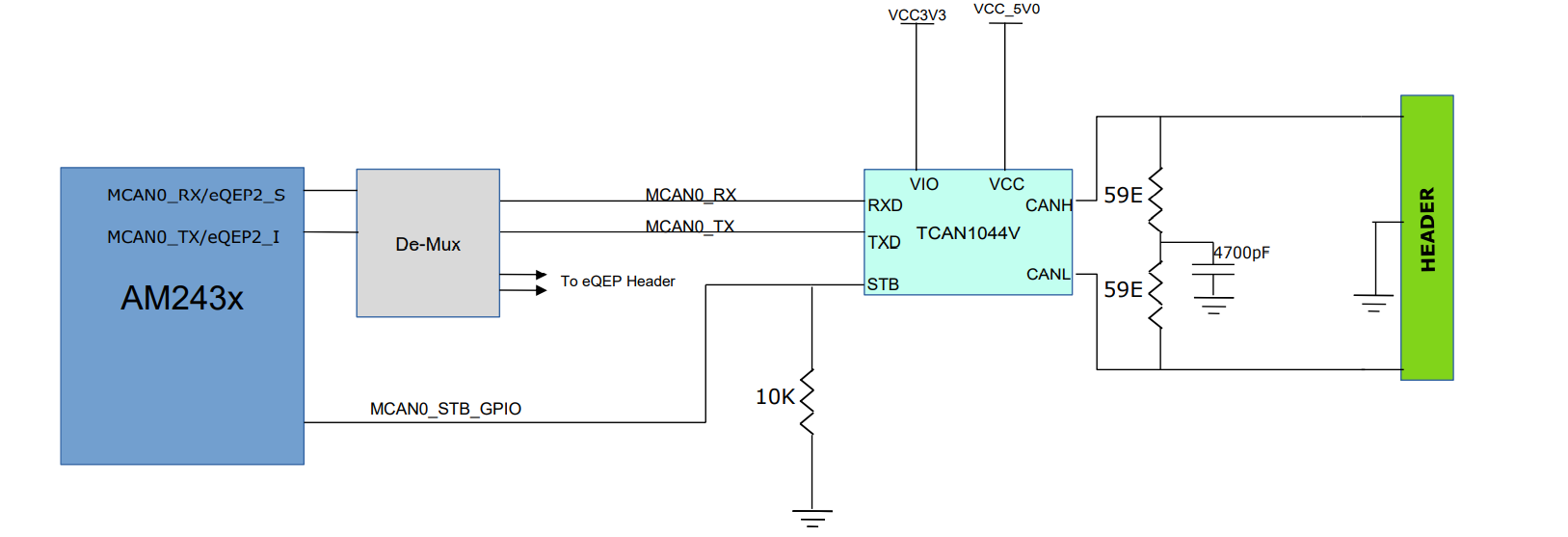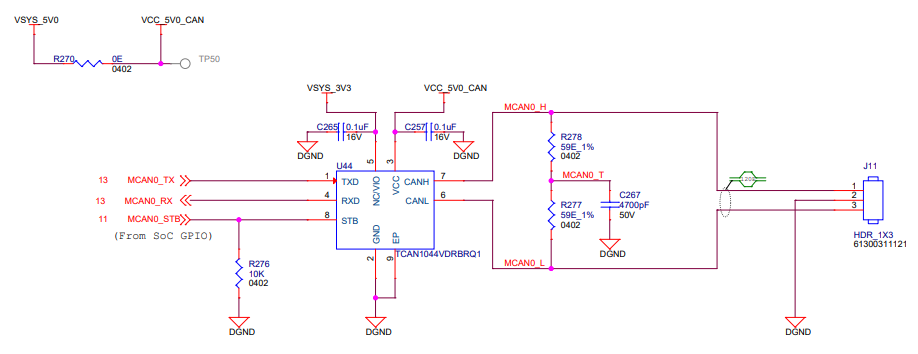SPRUJ12F August 2021 – January 2024 AM2431 , AM2432 , AM2434
- 1
- Abstract
- Trademarks
- 1Preface: Read This First
- 2Kit Overview
- 3Board Setup
-
4Hardware Description
- 4.1 Functional Block Diagram
- 4.2 BoosterPack Headers
- 4.3 GPIO Mapping
- 4.4 Reset
- 4.5 Clock
- 4.6 Memory Interface
- 4.7 Ethernet Interface
- 4.8 USB 2.0 Interface
- 4.9 I2C Interface
- 4.10 Industrial Application LEDs
- 4.11 UART Interface
- 4.12 eQEP Interface
- 4.13 CAN Interface
- 4.14 FSI Interface
- 4.15 JTAG Emulation
- 4.16 Test Automation Interface
- 4.17 SPI Interface
- 5References
- A E3 Design Changes
- B Revision A Design Changes
- Revision History
4.13 CAN Interface
The AM243x LaunchPad supports one CAN interface. MCAN0 signals are multiplexed with eQEP signals internally. These signals are connected to an on-board demultiplexer, whose select line is controlled by a GPIO from the SoC, to route the signal to either the MCAN transceiver or the eQEP header. Figure 4-21 depicts the implementation of the CAN interface using a CAN interface IC (TCAN1044VDRBRQ1). The TXD and RXD pins of the CAN interface IC are connected to the MCAN0_RX and MCAN0_TX pins of the AM243x, respectively. The STB pin can be directly driven by the AM243x to enable standby mode. When not directly driven by the AM243x, the 10kΩ pulldown resistor puts the CAN interface IC into normal operation mode. The output of signals for the CAN transceiver’s high and low are connected to the 3-pin header (J11).
 Figure 4-21 CAN Interface
Figure 4-21 CAN Interface Figure 4-22 MCAN Transceiver and
Header
Figure 4-22 MCAN Transceiver and
Header